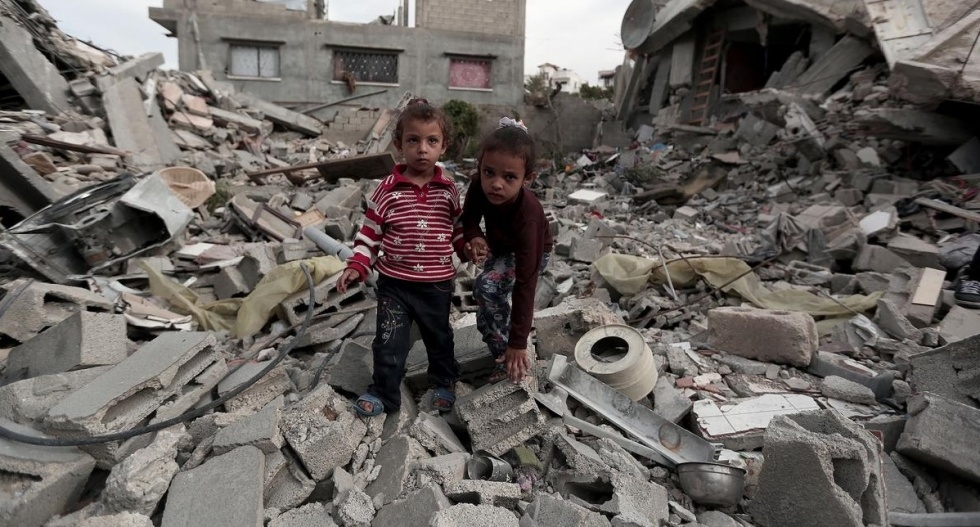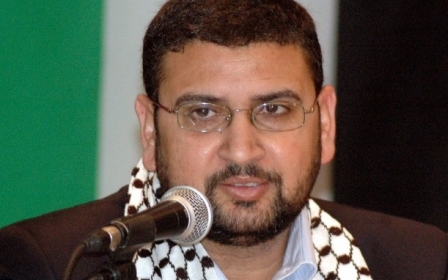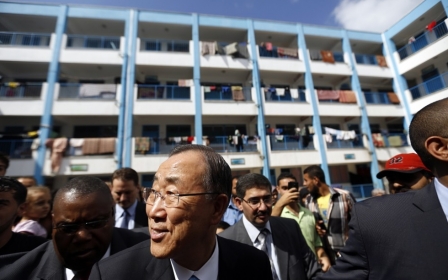
The French media created a parallel hell to divert attention from Gaza
While Gaza was being bombed into rubble, and thousands of its citizens were being killed or maimed, a parallel hell was being carefully constructed in France. Senior politicians, community leaders, and spokesmen for public bodies all played their part in a deceit which helped define the latest aggression by Israel on the Palestinians. It involved allegations of arson against synagogues, savage attacks on individuals, and an exodus of Jews driven away by persecution and hatred.
What made it all particularly effective was that large sections of the mainstream media reported the dramatic claims without question. Never mind that evidence was hard to come by, the very fact that those with authority and influence were describing alleged atrocities meant they must be true. Thus words like “Holocaust” and “Pogrom” were regularly used to draw attention away from the mounting slaughter of Palestinian civilians on the Gaza Strip. The dishonest impression was that members of a stigmatised community, the Jews, were battling for their lives in France, and accordingly Israelis living just over 2000 miles away had every right to “defend” themselves, even if it meant catastrophic Arab casualties.
Such coverage fitted in with the traditional manner in which wars carried out by Israel are usually reported in France. The conventions were certainly followed at the beginning of “Operation Protective Edge”, which lasted between July and August 2014. Information was distorted or simply made up in an attempt to further the subterfuge of a so-called just war, exactly as it had been during previous offensives.
The horrendous loss of lives was replicated this time round, and was indeed even worse: according to the Gaza-based human rights group Al Mezan Center for Human Rights, 2168 Palestinians were killed (the vast majority of the victims were civilians, including hundreds of women and children), and 11,100 wounded. The United Nations documented 71 Israelis killed, including 66 soldiers, four civilians, and one foreign national civilian. Some 1,000 tons of unexploded munitions remain on the ground in the Gaza Strip. One of the best funded military machines in the world - Israel - had also destroyed or caused major damage to 80,000 homes and other essential services, all under the pretence of making Israel a safer place.
“Israel attacked Gaza in 2006, in 2008, in 2013 [2012] and in 2014,” said Palestinian MP Mustapha Barghouti in an address to Palestine Solidarity Campaign activists in London in September. “In 2014, there was one hundred times more destruction and more explosives than in all three previous wars.”
One major difference between “Protective Edge” and earlier offensives was that the myths of Israel’s propaganda have been much easier to expose. This has largely been because of the presence of more traditional media organisations on the ground as well as the huge increase in the use of social media since 2008, not least in the Middle East, where phenomena like YouTube, Facebook and Twitter played such an important part in galvanising the Arab Spring of 2011. Instant images – videos and stills – have allowed ordinary people to show the world exactly what is happening in a specific place, at a particular time, and in precise detail.
As Israeli spokesmen desperately tried to portray the war as a symmetrical conflict between Hamas and the Israeli military, one in which civilian deaths were “inevitable”, they soon found themselves unable to disguise the bloody truth. This came into sharp focus on 16th July when four boys from the Bakir family aged between seven and 11 were killed by shells fired from an Israeli navy vessel while they played football on the beach near Gaza City’s tiny harbour.
Up until this point, much of the focus of the French media had been on alleged “human shields” being used to disguise Hamas rocket launchers, and the “warnings” offered by the Israelis before they hit “legitimate targets”. Hugely disturbing pictures of the boys’ corpses lying in the sand, clearly a long way from any possible weapons installations or arms caches, helped to change all that. So did the stream of images coming out of hospitals and morgues, showing other limbless children, women, men and elderly people lying motionless. It was the same when, a few days after the beach outrage, 16 civilians were killed and dozens more were injured when the Israeli war machine targeted a United Nations (UN) school which was being used as a shelter from Israel’s “precision-guided” missiles. This seemingly “pinpointed” attack was the first in a series by Israel against UN facilities that became the refuge for many of the nearly half-a-million displaced Palestinians fleeing their bombed-out homes.
During the campaign of the summer of 2014, as in previous conflicts, ones scrutinised by reporters and various human rights groups on the ground, including Amnesty International and the UN, the “human shields” argument fell apart. It became obvious from the wealth of video and photographic evidence that Gaza’s 1.8 million population lives in a hugely restricted, built-up area. The Gaza Strip is just 25 miles long and 7.5 miles wide at its largest point. The idea that civilians could simply move somewhere else because militant groups were firing outdated artillery ordnance from their neighbourhood proved as ludicrous as claims they would sacrifice their lives to protect weaponry and ammunition. The murder of civilians is a clear breach of international and human rights law.
Anybody who examined the nature of the Gaza community could also see that the “warning” given to civilians by the Israeli military to evacuate their homes was worthless. It often came in the form of “knock on the roof” bombs – ones which have been condemned by human rights groups. Other notifications included flyers, a phone call, or a text message for civilians to leave their houses within ten minutes. Even those who had a mobile phone to receive the “warning” in the first place (and many in such an impoverished place did not) could never have got away in time.
Meanwhile, back in France, the domestic distortions were also being exposed. As early as July 14 – just a few days into the conflict – the French media reported an “attack” on the Rue de la Roquette Synagogue, in the Bastille area of Paris. Some pro-Palestine supporters were said to have targeted the place of worship following a rally. Strangely, in stark contrast to the amount of material coming out of a bona fide war zone like Gaza, images of this “attack” in the middle of the French capital on a Sunday afternoon when the streets were full of tourists and other passers-by were non-existent. No pictures of damage, no pictures of victims. Nothing.
As so often with reports of physical attacks of an anti-Semitic nature in Paris, eye-witness names were as vague as their testimonies. The most vivid came from a woman only referred to as “Aurélie A.”, who claimed to have been trapped inside the synagogue as “missiles” rained down, and “Parisians from Arab countries” tried to harm the Jews inside. There were claims of an axe and even firearms being used by the alleged attackers. Sounding chillingly like an Israeli soldier, “Aurélie A.” said of one of her so-called tormentors: “I want to leave him for dead!”
CRIF, the Jewish Council of France, seized upon comparisons with the Nazi era. Roger Cukierman, its spokesperson, described the French pro-Palestine demonstration as a “new Kristallnacht”, a reference to the notorious “Night of Broken Glass” in Germany and Austria in 1938 when Nazi paramilitaries murdered up to 100 Jews and arrested around 30,000 others. Jewish homes, hospitals and businesses were demolished, just like Arab homes, hospitals and businesses were being destroyed in Gaza, argued Cukierman. Pro-Palestine demonstrators were publicly referred to as “terrorists” who “target synagogues”.
What the CRIF spokesperson failed to explain was that the “attack” on the Roquette Synagogue was exposed as pure fabrication. A very clear video shot by a neighbour showed a vigilante group called the LDJ (Ligue de Défense Juive, or Jewish Defence League) storming away from the synagogue. Armed with metal batons, gas canisters and café chairs and tables, its members initiated street fights with anti-war protesters while chanting “F*** Palestine”.
Serge Benhaïm, the president of the synagogue, caused further embarrassment for Cukierman, the CRIF and its slavishly loyal propagandists in the French media, by categorically confirming that there had been no attack on the place of worship. None of the opposing groups had got within 150 metres of his synagogue, said Benhaïm, and no-one was hurt. Moreover, he said that the LDJ, which is on the FBI’s list of outlawed terrorist organisations, should be banned in France “if it cannot control itself”.
None of this stopped the international media following up on the propaganda put out by their French colleagues. The Roquette Synagogue, more formally known as the synagogue Don Isaac Abravanel and built in 1962 to cater for an influx of North African Jews leaving decolonised countries, suddenly became the global symbol of a virulently anti-Semitic France.
Newsweek, the international current affairs magazine, is still running a fantasy article about such “attacks” contributing to a new “Exodus” of Jews from Europe. There are quotes from a “trapped” Roquette witness, who said that the “attack” was “like an Intifada” – the kind you get in Palestine, naturally. Stretching his comparisons to even more ambitious lengths, writer Adam LeBor throws in references to Nazi persecution and even the anti-Jewish “pogroms of Tsarist Russia”.
French Prime Minister Manuel Valls and elected mayors went so far as to use such media fabrications to justify bans on pro-Palestine demonstrations in Paris and other cities across France. Valls spoke of “working class” youths “who hide their hatred of the Jews behind the façade of anti-Zionism and hatred of the Israeli state.” Never mind that Manuel Valls is nominally a Socialist who is meant to view freedom of speech and association as a pillar of democracy. If you don’t like the message, just ban it, and make up another one, appeared to be the government view.
Following widespread coverage of the Roquette “attack”, a synagogue in the Paris suburb of Sarcelles surrounded by riot police was threatened by a gang of youths, who went on to vandalise a number of businesses, including some which were Jewish-owned. The LDJ was out in force in Sarcelles, but the distorters were happy to concentrate on the “pro-Palestine mob”.
Francois Pupponi, the deputy-mayor of Sarcelles, referred to a crowd of mainly teenagers, including schoolboys of black African origin, as a “horde of savages”, and there were lots of unverified reports about firebombs and mobs shouting “Death to Jews”. Again, there was no video or sound recording, or photographs of any of this. You just had to take the word of organisations like the CRIF. As live pictures of the murder and maiming of Palestinians were broadcast around the world, nobody at all could provide a single image to back up claims of what alleged anti-Semites were meant to be doing to the Jews of Paris.
By the time the false French media reports were translated and circulated abroad, it was accepted as fact that up to eight synagogues had been “attacked” in the greater Paris area and Jews were living in fear of their lives, just like the Palestinians of Gaza. There were claims that Jews were queuing-up to get out of France. Most were said to be heading for somewhere safer, particularly Israel. This was happening while the journalists involved in the creation of this French hell were also highlighting the “serious threat” posed by thousands of Hamas rockets being fired into Israel. This was despite the fact that, as has been proved, their impact was minimal by comparison, thanks to their primitive nature and Israel’s “Iron Dome” defensive shield.
With the honourable exception of a few outlets such as France 3, most of the Gallic media kept up the deceit, to the extent that blatant fabrications have now effectively entered the historical record.
In such circumstances, it was left to outspoken politicians, rather than prominent journalists, to lead French outrage against the Gaza slaughter. Dominique de Villepin, the former prime minister, produced an impassioned article in Le Figaro. De Villepin, who made his name protesting against the Iraq War in 2003, wrote: “Today, to raise one’s voice in view of the massacre perpetrated in Gaza is, and I write this with conscience, France's duty… It is time to pull off the veil of lies, of omissions, and of half-truths, to support the hope for change.”
Raising one’s voice is certainly one of the roles of any journalist, especially in the face of easily proven myths. The French Journalists’ Syndicate Code of Ethics is clear: “The public's right to access comprehensive, free, independent and pluralistic information must guide the journalist while performing his/her mission. This responsibility vis-a-vis the citizen takes precedence over any other.”
The ease with which elements of the media swerved around such an ideal in order to support those with an agenda to underplay the extent of Israel’s aggression towards Gaza by creating that parallel hell in France should be a source of considerable shame. This is especially the case now that organisations, including human rights groups, are accusing Israeli politicians and military leaders of war crimes, with a view to future prosecutions.
The saying that “Truth is the first casualty of war” is one which has been attributed as far back as Aeschylus, five centuries before Christ. What has changed since the days of the Greek dramatist, however, is that those who report the news today are under scrutiny like never before. Every aspect of a conflict, from casualties on the front line to the behaviour of people protesting against it in foreign countries, can and will be analysed in minute detail. If people use made-up events in connection with such horrors, then they will be called to account, not least of all in France.
-Nabila Ramdani is an award-winning journalist, columnist and broadcaster who specialises in French politics, the Arab world and Islamic affairs. Her twitter handle is @NabilaRamdani
Photo credit: Palestinian children search the debris of their houses, collapsed by heavy Israeli strikes, for their belongings in Shujaiya, eastern neighborhood of Gaza City, Gaza on 23 October, 2014 (AA)
New MEE newsletter: Jerusalem Dispatch
Sign up to get the latest insights and analysis on Israel-Palestine, alongside Turkey Unpacked and other MEE newsletters
Middle East Eye delivers independent and unrivalled coverage and analysis of the Middle East, North Africa and beyond. To learn more about republishing this content and the associated fees, please fill out this form. More about MEE can be found here.




